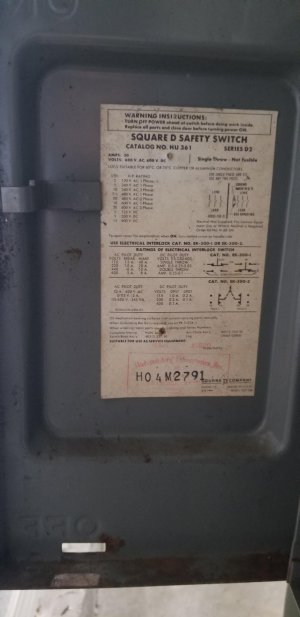I recently acquired a Southbend 14.5" lathe about 2 months ago and I finally was able to get it into my garage this past weekend. In my excitement I never thought to look at the motor (it was replaced by the previous owner) and I just assumed it was a 220V 3phase motor as that's what he told me. Now that I've got him home and I've been getting ready to wire it up I thought I should see whats down there and I think he actually put a 1 phase motor in. Electrical work is one of the few things I am willing to admit I have 0 knowledge and want to be absolutely careful with so any help would be appreciated.
The motor is a Marathon Electric Catalog No. F15E1. I guess it's a farm motor based on the ID tag. My questions are 1: Do I need to change this out for a 3 phase motor? 2: Will this affect the lathe's performance and how so? 3: The tag says 115V/208-230V does that mean it will run on either 115 or the 208 to 230 range of voltage and I'm assuming higher voltage would be better?
The motor is a Marathon Electric Catalog No. F15E1. I guess it's a farm motor based on the ID tag. My questions are 1: Do I need to change this out for a 3 phase motor? 2: Will this affect the lathe's performance and how so? 3: The tag says 115V/208-230V does that mean it will run on either 115 or the 208 to 230 range of voltage and I'm assuming higher voltage would be better?


